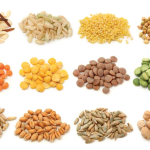
It’s estimated that 8 out of 10 Canadians have at least one risk factor for heart disease. Risk factors include getting older, family history of early onset heart disease, smoking, high blood cholesterol, hypertension, type 2 diabetes, abdominal obesity, and physical inactivity.
Sponsored Ads

Eat fatty fish. Salmon, trout, sardines and Arctic char contain DHA and EPA, omega-3 fats linked to protection from heart attack. These fats make the blood less likely to form clots, reduce inflammation and protect against irregular heartbeats that cause sudden cardiac death. Experts recommend an intake of at least 500 milligrams of DHA and EPA (combined) per day to help prevent heart disease – a target that most of us don’t achieve. To increase your intake, eat fish twice per week. If you don’t like fish, take a fish oil supplement.
Reduce sodium. Study after study has linked excess sodium with elevated blood pressure. The problem: Canadians of all ages are consuming too much sodium. Adults need no more than 1300 to 1500 milligrams of sodium per day. (The safe upper limit is 2300 milligrams.) Read nutrition labels and choose foods with a lower daily value (DV) for sodium. Foods with a DV of 5 % or less are low in sodium. Limit your intake of restaurant meals and processed meats such as bologna, ham, sausage, hot dogs, bacon and deli meats. Rely less on convenience foods such as canned soups, frozen dinners and packaged rice and pasta mixes.
Increase potassium. People who consume too little potassium are more likely to develop high blood pressure and suffer a stroke. The mineral is thought to help blood vessels relax and cause the kidneys to excrete sodium which prevents blood pressure from rising. Adults need 4.7 grams (4700 milligrams) of potassium each day. To boost your potassium intake, eat more legumes, fruits and vegetables. (One-half cup of cooked spinach provides 443 milligrams of potassium; one banana has 422 milligrams, and 3/4 cup of chickpeas delivers 343 milligrams.)
Go whole grain. Studies have revealed that people who eat the most whole grains (about 3 servings per day) had a risk of heart disease or stroke 20 to 40% lower compared to folks whose diets contained little or none. Aim for at least 3 whole grain servings per day, and preferably more. One serving of whole grain is equivalent to 1 slice of whole grain bread, 1/2 cup cooked oatmeal, 1/2 cup of cooked brown rice or whole wheat pasta. Choose breads, cereals and crackers made from 100% whole grain (check ingredient list). Try pasta made from whole wheat, brown rice, spelt or kamut. Substitute cooked bulgur, quinoa, wild or brown rice for potatoes and white rice.
Sponsored Ads
Increase soluble fibre. If your LDL cholesterol is high, you need to consume at least 3 grams of soluble fibre each day to lower it. You’ll find it in oats, oat bran, psyllium-enriched breakfast cereals, flaxseed, barley and legumes. One cup of cooked oat bran, 1.5 cups of cooked oatmeal and 1/3 cup of Kellogg’s All Bran Buds all provide 3 grams of soluble fibre.
Add legumes and nuts. Eating more legumes (e.g. chick peas, kidney beans, lentils) and nuts can help lower blood pressure, reduce LDL cholesterol, and keep blood sugar levels in check. Researchers attribute the cardio-protective effects of legumes to their vegetarian protein, folate, potassium, magnesium, calcium, and antioxidant content. Include legumes and nuts in your diet at least four times per week. Add legumes to soups, salads, chili and tacos. Toss nuts into a stir-fry, sprinkle over hot cereal or enjoy them as a snack.
Take vitamin D. Growing evidence suggests that having a suboptimal vitamin D level boosts your risk of heart disease and heart attack. The nutrient helps keep heart cells healthy, maintains normal blood pressure, and reduces inflammation in the body. Since Canadians don’t produce enough vitamin D from sunlight October through March – and very few foods contain it – you need to take a supplement. Adults should take 1000 IU (international units) of vitamin D each day in the fall and winter (children should get 400 IU per day).
Adults over 50, people with dark skin, those who don’t go outdoors often should take the supplement all year round. Leslie Beck is a Toronto-based registered dietitian in private practice. Visit her website at www.lesliebeck.com Her latest book is Heart Healthy Foods for Life: Preventing Heart Disease Through Diet and Nutrition (Penguin Canada 2009).



































































































































































































































































































































